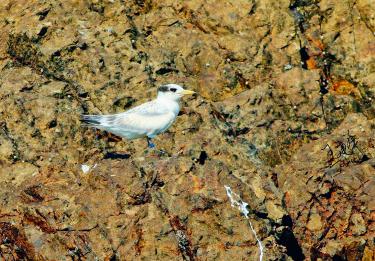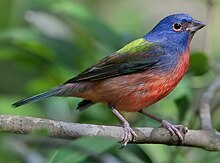by Chris Clarke
December 14, 2015 4:00 PM
A vanishing songbird that was once the most common bird in California is being formally considered for protection under the state's Endangered Species Act. On Friday, the state's Fish and Game Commission agreed to make the tricolored blackbird a candidate for listing under CalESA, reversing a controversial decision made in June to let protections lapse.
The tricolored blackbird (Agelaius tricolor), which once numbered in the uncountable millions in California, has dwindled to the point of near-extinction as a result of damage to its wetland and grassland habitat throughout the state. Though individual flocks may still number in the tens of thousands, that seeming abundance actually makes the tricolored vulnerable: by gathering in massive breeding colonies on the agricultural lands that have replaced its native habitat, the bird can lose huge chunks of its population to a single ill-timed pass of a tractor.
"There's no question that tricolored blackbirds desperately need this long-overdue protection to avoid their slide toward extinction," said Ileene Anderson, a senior scientist with the Center for Biological Diversity, which had petitioned the Fish and Game Commission to list the bird. "The California Fish and Game Commission made the right decision, based on the overwhelming science documenting the ongoing population declines of these birds."
"The Fish and Game Commission made the right decision," said Brigid McCormack, executive director of Audubon California on Friday. "We are pleased that this consideration triggers protections for this struggling species."

